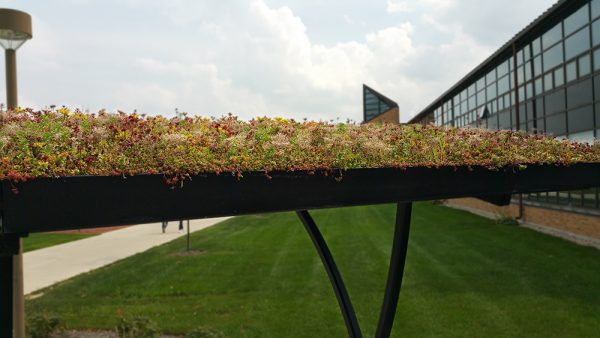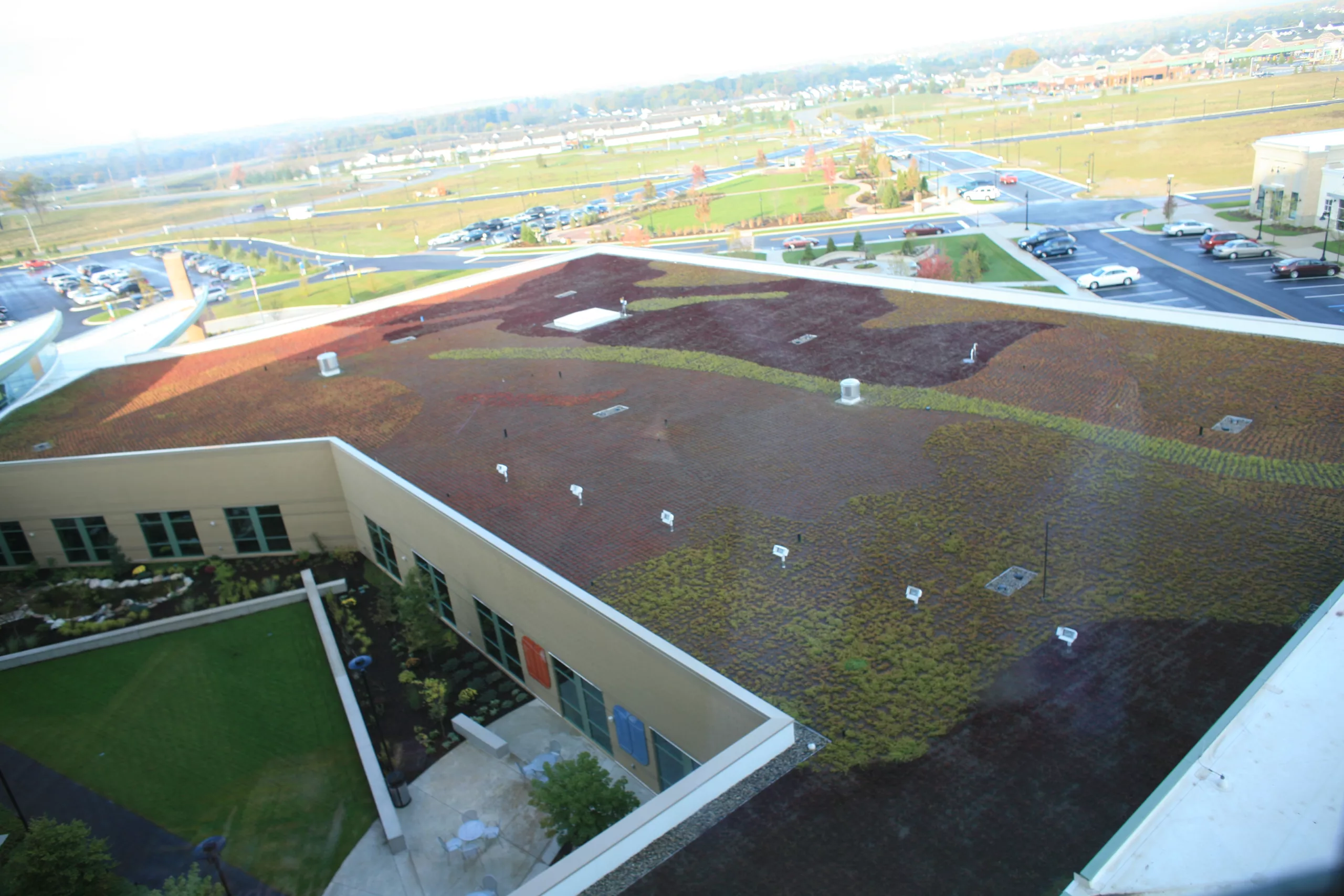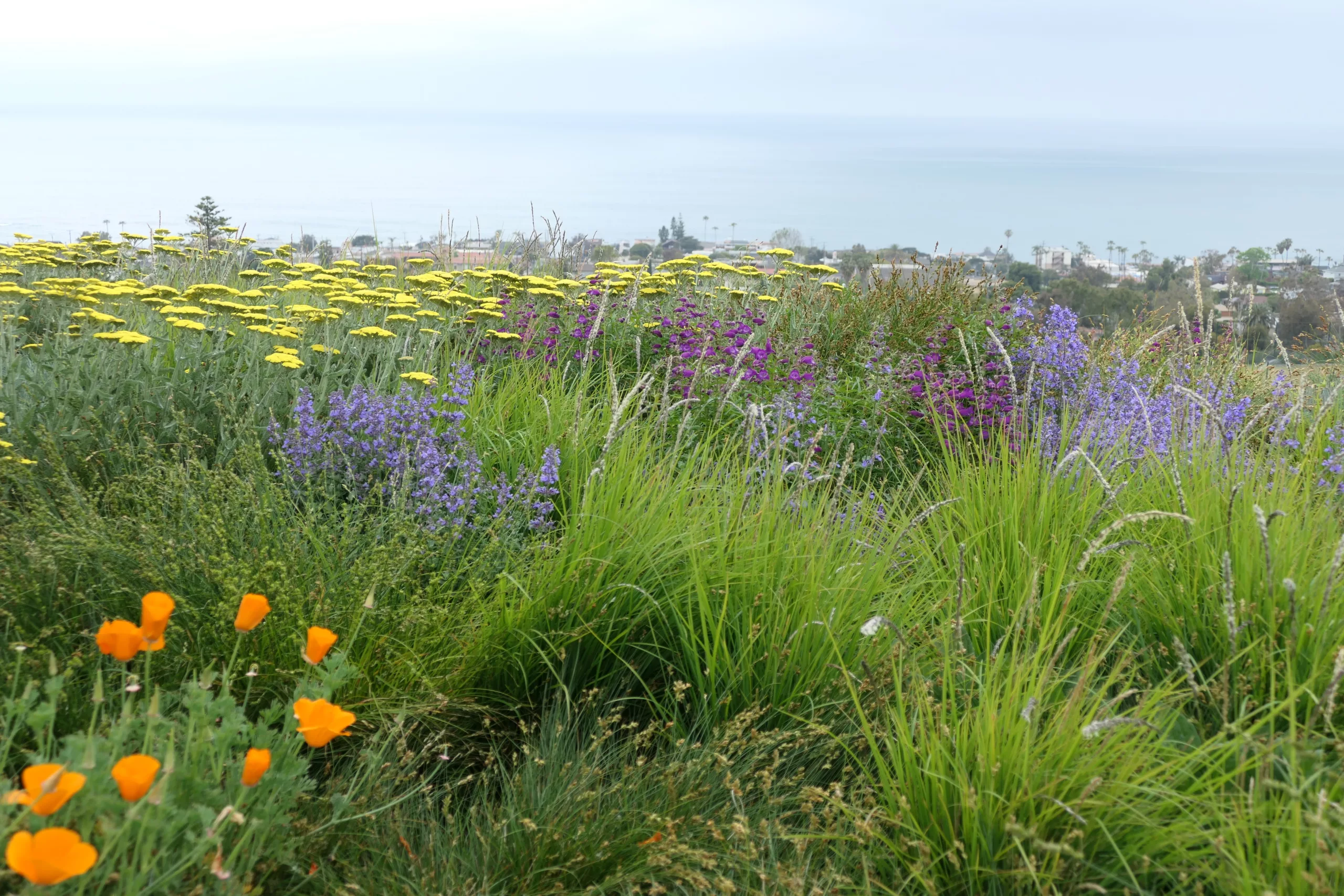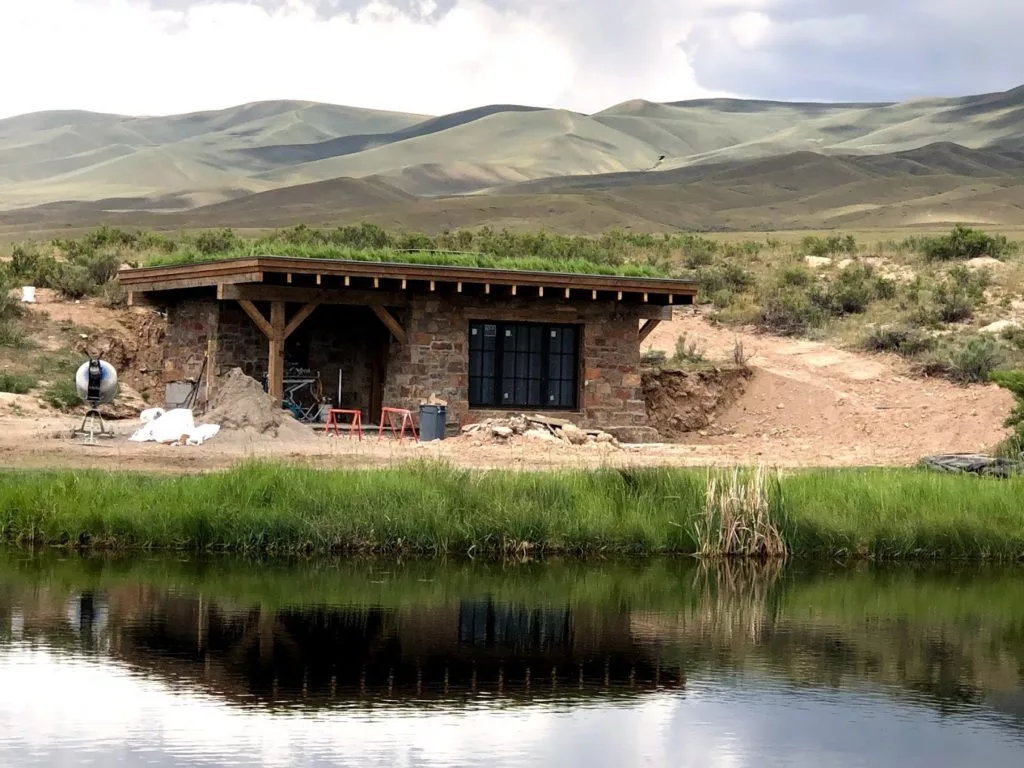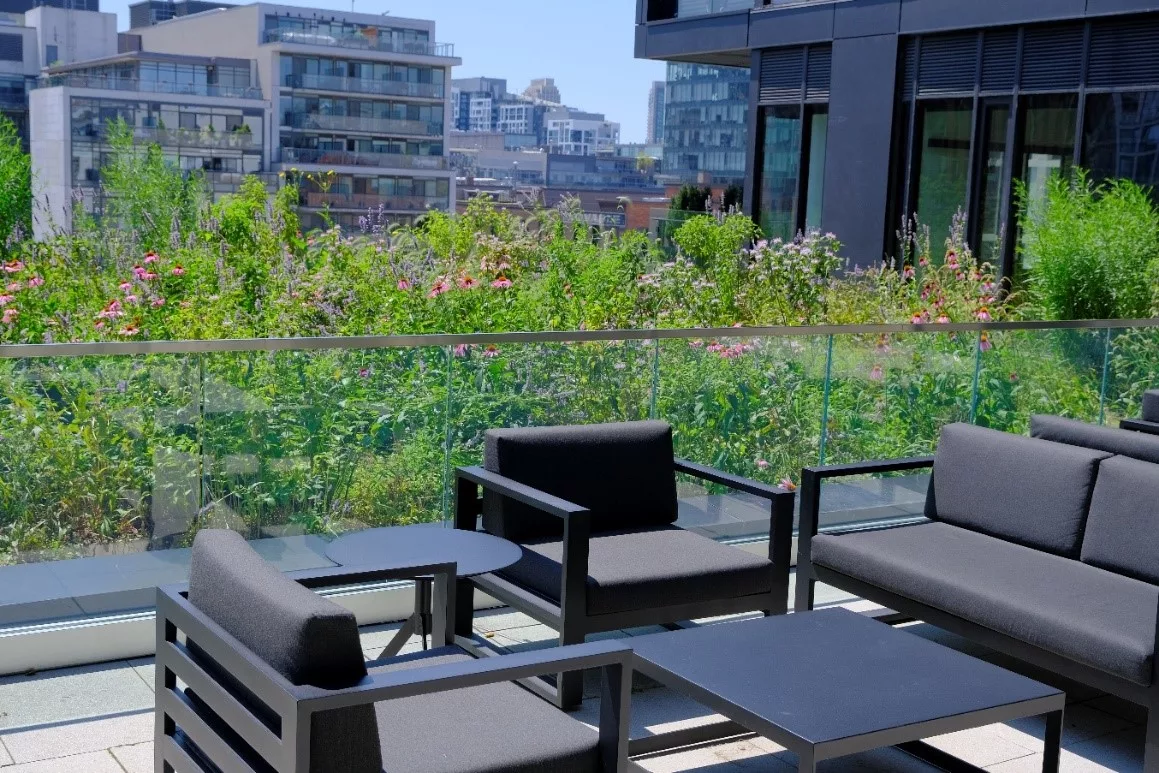Bowling Green State University’s Office of Campus Sustainability has used a $50,000 grant from the Ohio Environmental Protection Agency’s Environmental Education Fund (OEEF) to purchase bicycle shelters featuring LiveRoof brand living roofs. These shelters add more green space to the increasingly sustainable campus, where the Carillion Dining Center was also topped with a sustainable living roof earlier this summer.
Two bicycle shelters, located outside the Student Recreation Center and the Wolfe Center for the Arts, each provide 18-20 covered locations for students and staff to park bikes. The BGSU bicycle shelter roofs feature sedums and other succulent plants that help address two of the EPA’s priorities: managing stormwater runoff and reducing emissions.
Green roofs provide natural function and beauty while offering aesthetic, environmental and social benefits. The benefits of vegetative roofs include the reduction of urban heat islands, extend the life of the roof and provide a habitat for pollinating insects. Financial benefits can also be achieved from a vegetative roof including: extension of roof life, energy conservation, enhanced public relations, and conservation of municipal septic systems.
“We have several green roof projects on campus. I found that students, as well as the rest of the university community, were interested in the green roof process and the many benefits that come with such a roof,” said Dr. Nicholas Hennessy, Sustainability Coordinator. “I also have a strong interest in the educational opportunities provided by such installations. We have been able to use our projects as educational ‘labs’ for some of the environmental studies classes as well, so there is a lot of learning going on.”
Bowling Green students voluntarily pool funds into the “Student Green Initiatives Fund” to support campus-wide sustainability projects such as the bike racks and dining hall projects. The University’s Student Green Initiatives Fund provided the percentage of matching dollars required by the OEEF grant. BGSU and The Ohio State University were the only university recipients of grants for the structures.
The OEEF was created by the General Assembly in 1990 to enhance Ohio citizens’ awareness and understanding of environmental issues. It is administered by the Director of the Ohio Environmental Protection Agency (Ohio EPA) and provides approximately $1 million annually in grants to support environmental education efforts within the state of Ohio.
Darren Mayer of landscape architecture firm MKSK designed the bicycle racks for BGSU. Sustainable Green Solutions of West Chester, Ohio provided green roof technical and logistical support to the design and construction team.
“It’s a privilege for to work with BGSU’s Campus Sustainability office and support their goals for creating a sustainable, environmentally-responsive campus community. The students take an active role by creating sustainable strategies, raising funds and managing their lifestyle choices. It’s exciting to me to see this movement growing on such a large scale.”

